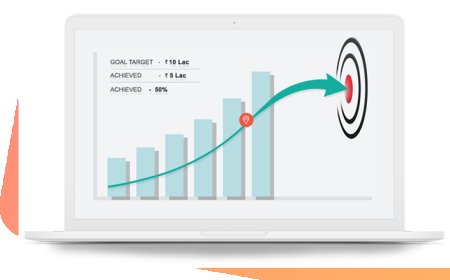Efficient Loan Management System for Smarter Lending
A loan management system provides just that: a centralized platform that manages the entire lifecycle of a loan, from disbursement to closure, while reducing manual work and improving transparency.

As the financial services industry rapidly shifts toward digitization, traditional lending processes are being replaced with smarter, automated alternatives. Among these, the loan management system has emerged as a powerful solution to streamline lending operations, enhance customer satisfaction, and maintain compliance with regulatory norms.
With growing competition and evolving borrower expectations, financial institutionsranging from banks and NBFCs to fintech startupsrequire robust systems to handle loan servicing efficiently. A loan management system provides just that: a centralized platform that manages the entire lifecycle of a loan, from disbursement to closure, while reducing manual work and improving transparency.
What Is a Loan Management System?
A loan management system (LMS) is a comprehensive software solution that automates and oversees every aspect of loan servicing. This includes repayment tracking, interest calculations, collection scheduling, notifications, documentation, customer interactions, and reporting.
Unlike loan origination systems, which handle the initial application and approval process, a loan management system focuses on the administration of the loan after disbursement. It ensures that repayments are processed correctly, delinquencies are managed promptly, and borrowers remain informed throughout the duration of the loan.
Key Features of an Effective Loan Management System
A good loan management system offers a wide array of features tailored to meet the needs of diverse lending institutions. Some of the most important include:
1. Repayment Tracking
Track all repayments in real-time, including EMI breakdowns, interest, and principal components. Supports multiple repayment modes like NEFT, IMPS, UPI, and auto-debit.
2. Automated Notifications
Send automatic reminders and alerts for due dates, payment confirmations, and missed installments via email, SMS, or app notifications.
3. Flexible Loan Structuring
Allows lenders to offer a variety of loan products with flexible tenures, repayment frequencies, and interest types (fixed or floating).
4. Document Management
Store and manage borrower documents in a secure digital repository with version control and quick retrieval features.
5. Delinquency Management
Automate collection workflows, define risk triggers, and initiate recovery actions when a loan becomes overdue.
6. Customer Self-Service Portals
Provide borrowers with access to their loan status, payment history, and account statements through online portals or mobile apps.
7. Customizable Reporting
Generate detailed reports on loan portfolios, repayment patterns, NPA tracking, and agent performance to support strategic decisions.
Benefits of a Loan Management System
Implementing a loan management system brings a host of benefits that positively impact both lenders and borrowers:
-
Operational Efficiency
Automation eliminates manual processing errors and reduces time spent on routine tasks, allowing staff to focus on customer service and strategy.
-
Regulatory Compliance
Built-in audit trails and compliance frameworks help meet RBI, SEBI, and other financial regulations with ease.
-
Customer Satisfaction
Borrowers benefit from timely communication, digital access to loan data, and smoother repayment experiences.
-
Improved Cash Flow Management
Real-time tracking of repayments and forecasts allows better liquidity and risk planning.
-
Scalability
Whether handling hundreds or millions of loan accounts, an LMS can scale seamlessly to accommodate growing operations.
-
Integration with Modern Lending Models
The rise of Credit line on UPI has accelerated the need for agile systems. A capable LMS can easily integrate with UPI and digital wallets to process real-time repayments and disbursals.
Integrating the LMS with Other Financial Systems
To maximize its effectiveness, a loan management system should integrate smoothly with other financial tools and platforms:
-
Core Banking Systems For centralized account synchronization and GL mapping.
-
Payment Gateways UPI, credit cards, wallets, and net banking for flexible repayment options.
-
Credit Bureaus Continuous monitoring of borrower creditworthiness.
-
CRM Tools Enhance customer engagement by maintaining comprehensive borrower profiles.
-
Accounting Software Sync interest, tax, and fee records for accurate financial statements.
These integrations ensure a seamless experience for borrowers and create a 360-degree operational view for lenders.
Choosing the Right Loan Management System
Selecting the best LMS for your institution depends on several key factors:
-
Customization Can the platform support unique loan types and repayment structures?
-
Ease of Use Is the interface user-friendly for both staff and borrowers?
-
Cloud vs. On-Premise Deployment Choose based on your IT infrastructure, security policy, and scalability needs.
-
Security and Data Privacy Look for systems that offer strong encryption, role-based access, and regulatory compliance.
-
Mobile Access A mobile-first approach is critical in markets where borrowers prefer smartphones for financial interactions.
Leading Loan Management System Providers
Some of the leading providers in the loan management software space include:
1. TurnKey Lender
Offers an all-in-one lending automation solution with underwriting, servicing, and collection modules.
2. LoanPro
Cloud-native LMS with robust API support, excellent for integrating with other fintech ecosystems.
3. Mambu
A flexible core banking platform that includes loan servicing capabilities ideal for digital-first institutions.
4. FIS
Used by large banks globally, FIS offers scalable and highly secure loan servicing tools.
5. LendFoundry
Specializes in agile lending solutions for fintechs and NBFCs, with strong analytics and reporting features.
Future Trends in Loan Management Systems
As lending continues to evolve, loan management systems are incorporating emerging technologies to stay ahead:
-
AI-Powered Risk Scoring Real-time borrower risk assessment using behavioral data.
-
Voice-Enabled Interfaces Customer service and payment inquiries handled via voice assistants.
-
Blockchain-Based Agreements Smart contracts for transparent and tamper-proof loan servicing.
-
Open Banking Integration Real-time access to borrower transaction data for more dynamic risk models.
-
Micro and Nano Loans Rapid deployment of small-ticket loans via mobile apps and UPI integration.
Conclusion
The digital age of lending demands accuracy, speed, and scalabilityqualities that a robust loan management system can deliver. By automating complex workflows, integrating with digital payment ecosystems, and offering self-service tools to borrowers, LMS platforms have become the backbone of modern lending operations.
Whether you're an established financial institution or a growing fintech company, investing in a reliable loan management system will position your business for long-term success. As models like Credit line on UPI continue to reshape lending behavior in India, having the right tools in place will allow you to meet market demands and deliver exceptional borrower experiences.






































